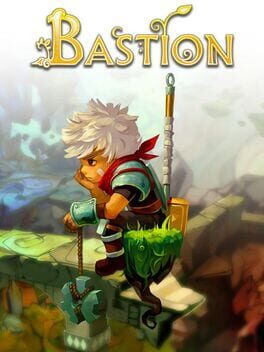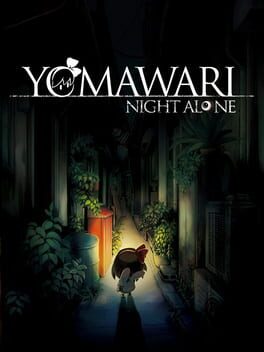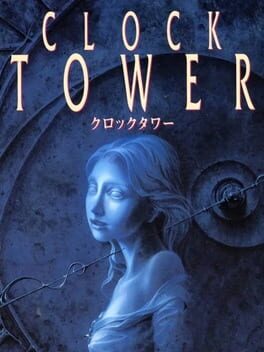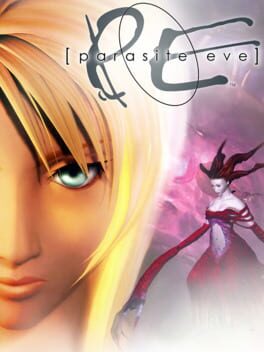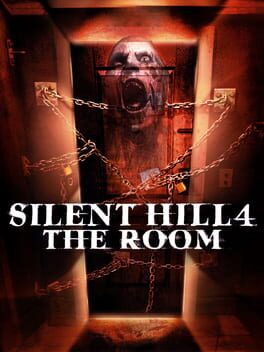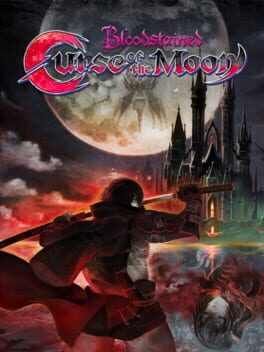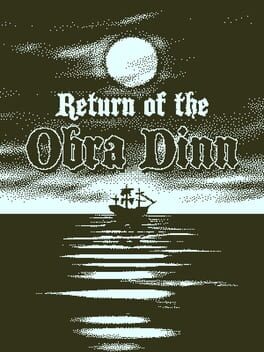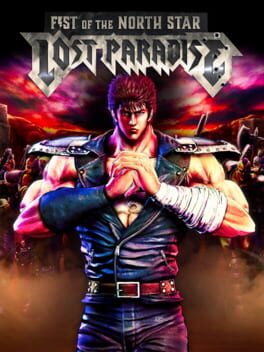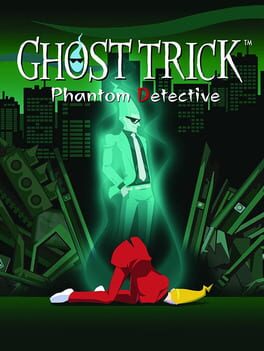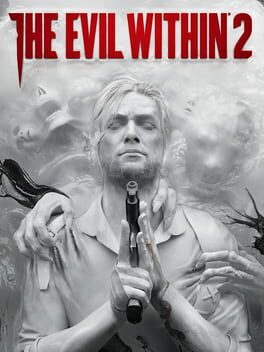2019
This game is considered a remake of Resident Evil 2, but it’s not an entirely accurate designation. That’s even when using the term “remake” somewhat loosely, like in the case of Resident Evil for the Gamecube, and the key point to consider when drawing the line is continuity of the core challenge. In the original games, the core challenge is applying character and resource limitations wisely, allocating your reserves in proportion to the difficulty of a given challenge. This isn’t what Resident Evil 2 REimagined is about, but it’s hard to notice that at first. It’s not because of the over-the-shoulder perspective or the enhanced movement, but in the inability for players to wisely invest resources. Similar to Resident Evil 4, this game has an invisible difficulty adjustment system, which secretly changes the rules as you play. I won’t divulge everything it does so you can enjoy the game without being spoiled, but I believe that just knowing it exists will prevent frustration. Resident Evil 4’s adjustments could be handled gracefully with its linear structure and item drops coming from enemies, adjusting your supply levels without interrupting the pacing at all, but Resident Evil 2 didn’t use this type of system. It instead has set locations for items and a small nonlinear play space, so the only place to automatically tune the difficulty was with the enemies. Players in a rough spot may cripple zombies with a single bullet and incapacitate them with four, when a well-performing player may require five and ten respectively. If you enter a new room and intelligently devise a plan, only for it to be thwarted by enemies that are suddenly incredibly durable and aggressive, the difficulty adjustment is why. You have to put aside your frustration and accept that the game is trying to make sure you stay on the edge of your seat, even if it means being unfair. In a genre about making smart decisions, these foggy parameters can cripple the experience.
Since arguments about difficulty can easily be dismissed with a “get good” and it seems like such a minor issue get worked up about, I feel the need to finally show my badge. I beat Resident Evil 2 six times, including a hardcore S+ run with each character, where the enemies are stronger, you can only save 3 times, and have to beat it in two hours. The reason I enjoyed doing all that is the same reason why I said you should know about difficulty adjustment before starting the game. Once the cryptic mechanics are demystified, Resident Evil 2 can be enjoyed as the most cinematic action game ever created. There isn’t a Devil May Cry level of depth, but the reactivity from each enemy in such a nuanced environment leads to an incredibly satisfying gameplay system to master. That’s why I recommend it under the caveat that you give it your full attention over multiple playthroughs. After all, if I stopped after my first run, this review would have ended after the first paragraph.
Since arguments about difficulty can easily be dismissed with a “get good” and it seems like such a minor issue get worked up about, I feel the need to finally show my badge. I beat Resident Evil 2 six times, including a hardcore S+ run with each character, where the enemies are stronger, you can only save 3 times, and have to beat it in two hours. The reason I enjoyed doing all that is the same reason why I said you should know about difficulty adjustment before starting the game. Once the cryptic mechanics are demystified, Resident Evil 2 can be enjoyed as the most cinematic action game ever created. There isn’t a Devil May Cry level of depth, but the reactivity from each enemy in such a nuanced environment leads to an incredibly satisfying gameplay system to master. That’s why I recommend it under the caveat that you give it your full attention over multiple playthroughs. After all, if I stopped after my first run, this review would have ended after the first paragraph.
Majora’s Mask is hard to critique when its flaws are a direct result of how the game was able to be made at all. Ocarina of Time was a smash hit, so taking advantage of the veteran development team and the assets they had to quickly put out another game seemed like a great idea. Even as someone who isn’t a Zelda fan, I have to say that it really, really was. The creative freedom afforded by low development risk lead to what is easily the most artistically ambitious game in the series. Taking a franchise centered on freedom and exploration and putting a timer to it was an incredibly bold move, and the morbid atmosphere it serves to strengthen is even bolder. Sadly, that ambition has a double edge, and the limitations are hard to miss. Watching different characters deal with unavoidable disaster is incredibly interesting, but either through the N64’s limited memory or the low amount of development time, the interaction with them is barebones. Most characters have about three different versions of dialog, and you complete a quest by talking to them at specific times with a certain mask on. The rigidity and lack of depth can make you feel a certain detachment from the narrative, and the immersive quality takes a huge hit. Even so, the experience as a whole is fairly captivating, and I can attest that it holds up enough to win over at least a few Zelda skeptics.
Stalker has a reputation for being the Fallout for cool hardcore gamers, but this perception may be part of why the game is considered so niche in the first place. Starting up Stalker and expecting to dive into the loop of exploration, combat, and gathering will leave you feeling disappointed in all three respects. In Stalker, these pillars of open world shooting have all been designed to convey the harshness of the irradiated zone, rather than to provide a traditionally enjoyable experience. The best example of this is how looting enemies for weapons, something that’s a no-brainer in other rpg’s, is almost pointless. Life is cheap in the zone, guns are everywhere, not having one at hand means you’re probably already dead. That’s great from a worldbuilding perspective, but it goes against the open-world standards to a degree that anyone trying to play with those assumptions is going to have a bad time. This is why fans of it, including myself, will say that you should play Stalker and enjoy it specifically for the ways it alienates you. The resulting atmosphere is worth it.
Note: Appreciating some clunkiness does not mean appreciating bugs. I recommend installing the Zone Reclamation Project (ZRP) mod, as it is the lightest-touch bug fixing mod out there.
Note: Appreciating some clunkiness does not mean appreciating bugs. I recommend installing the Zone Reclamation Project (ZRP) mod, as it is the lightest-touch bug fixing mod out there.
2011
Bastion is one of the most powerful gods on the indie-gaming pantheon, next to the likes of Braid and Fez. It was part of the first wave of indie titles which brought the concept to the public eye, thanks to its wholly original visual presentation and simple but rewarding third person action gameplay. The problem is that you’re reading a review written in 2019 and not 2011. It’s still a fun and good looking game, but indie development has gotten more ambitious since then, and Bastion’s ideas have been refined in subsequent games. If you haven’t played it yet, I would caution against thinking of it as one of the all-time-great indie titles, but I would still say it’s definitely worth a playthrough.
The best way to sum up my thoughts is that Yomawari copies the weaknesses of Silent Hill, but not its strengths. Silent Hill has lackluster gameplay that mostly consists of walking from point A to point B, but it’s propped up by a uniquely holistic style of narrative presentation where every detail, from your controls to the enemy design, is relevant to your understanding of the world. Yomawari has wandering and item collection, but the plot and presentation are similarly point A to point B. While big-headed-child-alone-in-a-scary-world is a proven concept, Yomawari brings nothing but the basics to the table. There may be a workable concept here, but it’s not a unique one, so I certainly wouldn't recommend it.
1995
Resident Evil is embedded in the popular consciousness as the starting point of the survival horror genre, but since Clock Tower was released on the SNES, it’s pretty easy to see why that perception is incorrect. Not only did Clock Tower do mansion-exploring horror before Resident Evil, it was already pioneering a stealth-focused style of horror which modern players might associate with Amnesia. For such an ambitious concept to be executed in a way that holds up to this day is nothing short of amazing. The aspect I’m most impressed by is the physicality of the protagonist, who doesn’t have the endurance to constantly sprint everywhere and fend off monsters, which is a given in most games. You actually have to save your energy for when you really need it and use strength as a last resort. Having limited resources is the keystone of survival horror, but this is the only game I know of where the limitation is physical wellbeing rather than the standard ammo and lifebar. It’s a cool concept that’s worth checking out, especially for fans of the genre.
1998
A game on the cusp of greatness. The concept of a cinematic modern RPG still hasn't been fully realized to this day, and for this game to come so close all the way back in 1998 is impressive. However, it lacked a certain "wow" moment that would put it over the top. It has a cool intro, an interesting combat system, but then... nothing really changes. You just keep talking to people and doing the same combat pretty much the entire way through, with the story getting weirder but not necessarily more interesting until the last moments of the game. If you want to see an interesting piece of JRPG history, you should definitely check out Parasite Eve, but for everyone else I'm not sure it holds up well enough to be an exemplar of the genre.
Silent Hill 3 is polished but not innovative, and this game is innovative but not polished. After Silent Hill 2, Team Silent was split up to create the two games, and with how they perfectly compliment the others' weaknesses, it's sad to think about what might have happened if they were allowed to work together one more time. As it stands though, this game's amazing horror concepts are let down by controls that are clunky even by the series' standards, long escort sections, and a narrative presentation that gets even murkier than a mysterious horror game should be. It's worth a look for its uniqueness, but I wouldn't blame anyone for not finishing it.
Even within a series of amazing games, Castlevania 3 stands out. It refines the thoughtful action of the first game while adding character swapping and branching paths to provide the most satisfying Castlevania experience yet. It's guaranteed to be one of your top NES games if you like a challenge, just be sure to play the Japanese version with the enhanced music.
Wait, I was supposed to write about Curse of the Moon, and ended up giving a shallow overview of Castlevania 3. Conveniently, if you would like to play a shallow overview of Castlevania 3, Curse of the Moon is right for you. When it copies screens from the original Castlevania games along with all their signature mechanics, I feel justified labeling it a clone. It's a $7 clone of a game I like at least, so I have to admit I left satisfied, but I don't have much respect for it.
Wait, I was supposed to write about Curse of the Moon, and ended up giving a shallow overview of Castlevania 3. Conveniently, if you would like to play a shallow overview of Castlevania 3, Curse of the Moon is right for you. When it copies screens from the original Castlevania games along with all their signature mechanics, I feel justified labeling it a clone. It's a $7 clone of a game I like at least, so I have to admit I left satisfied, but I don't have much respect for it.
This game is an absolute treat. If you haven't heard of it, because not many people have, it's a game by the creator of Papers Please where you investigate the mystery of the Obra Dinn, an East India Company ship where all hands were lost at sea. You have a list of the crew, a few photos, and have to piece together who is who and how they died by traveling back to the moment of their death using a magical watch. Since people don't usually shout their names, what killed them, and who all the observers are from left to right, you have to use everything from uniforms to marks on the wall to make your deductions. The amount of clues and the cleverness of their placement is jaw dropping, and even minor crew members usually a solid clue to go off. The problem is it's "usually" instead of "always". While I didn't have to check a guide, I tallied up my solutions and only 3/4ths were done with direct deduction, and the rest were "I know your position or your race, and I'm sure of a few other people, so I'll just swap the information around until the game clicks into place". The game won't let you guess everyone, as you need to solve three at a time for the entries to lock into your solution notebook, but it's also loose enough to suggest the game is fully aware that some clues are way too hidden away and a couple characters are too ambiguous to be decisive until the end. The game's pacing certainly doesn't help, as you're forced to experience every memory before you're able to freely investigate. The other black mark on the game is its interface, presented as a book you're writing notes in. It's such a clunky way to navigate information that it feels like you're solving a rubik's cube with your elbows, and it took me a couple hours before I really understood how to navigate it. Even with the issues though, I love this game so much. It trusts players to be smart to a very gratifying degree, and I felt genuinely accomplished when I sorted out the mystery of the ship and each individual crewman. Absolutely play this game if you're even a little interested. It took me 7 hours to finish and it was so gripping I did it in one day. Really. Play it.
1988
This game is probably the most unassailable classic game ever, but it's not the best. I think platforming is a genre that has been explored pretty thoroughly since this game came out, and hundreds of games have evolved from this one to make some great stuff. It's good and fun, no problems, but Mario is the template for every platformer you've ever played, so it won't be very exciting. You should play it anyway though, because as I just said, it's the template for every platformer you've ever played. It's good to have perspective.
2005
Just like Symphony of the Night, I've been hard on this game in the past for redefining a series I had previously enjoyed. Also like Symphony of the Night, I've come around to appreciating just how much heart this game has. Not only did this game pretty much invent the concept of using a horror setting to push players to mastery of action mechanics, it did so with style. It's almost tragic to look back on all the third person shooters this game lead to which had you dryly sitting in cover, with enemies lacking a wide set of meaningful interactions. Even Resident Evil 5 moved more towards typical shooter gameplay compared to the risk and reward this game facilitates with its combat. This game along with Vanquish give me the sense that third person shooting still has a lot of room for improvement, so you should probably go play both of those. They were also both directed by Shinji Mikami, so you gotta admit, this guy knows how to make games lively.
This game is meant to be a fanservice mashup of Fist of the North Star and Yakuza, and sadly, that's all it is. I was hoping that Fist of the North Star would be the injection of originality Yakuza needs to break out of its formula, while Yakuza helped North Star's similar mix of gravitas and humor really shine. However, it ended up being just a celebration of the memes of both series, which can't be enjoyed as much when it doesn't have the serious moments to play off. Combining that disappointment with the outdated Yakuza 0 engine, playing this after Yakuza Kiwami 2 was a letdown. Not having fun while blowing up people with a hokuto hyakuretsu ken is pretty much impossible, so I can't write it off, but it's crazy how an idea with this much promise didn't end up as some of the most fun I've had in a game in general.
In Japan, this game is simply titled "Ghost Trick" which is a way better title if only for how it isn't misleading. I went into this game hoping for some good paranormal investigation, but the gameplay's actually just possessing and wiggling objects in predetermined ways to prevent people's deaths. It's a charming premise for a game and a story, but when it comes to actually playing it, it's nothing more than adequate. Just as the gameplay wasn't as nuanced as I hoped, the story doesn't trust you to figure things out and rehashes information constantly to make sure you're on track. I would have appreciated this game more if it was 25-50% shorter and gave players a chance for deduction instead of outright telling you things, but I also have to admit that it was still an overall good experience. Check it out if you're into visual novels, but not if you want something puzzley.
2017
I had more fun in my initial playthrough of this game than the first, and it has all the same charm, but I'm reluctant to say it's better. Instead of blending horror and action into a thrillingly tight experience like the first game, it goes for a more relaxed style where you can take your time exploring open world segments. The first game wanted to be a fast-paced trip through a variety of horror setpieces, so a dreamlike world was a great way to bind the pieces together, but it's less tailor-made for the premise of the sequel. Turning that dream world into a relatively stable environment with lower variety still allows for some interesting moments, but the uniqueness was certainly lessened, and the resulting methodical pacing prevents the sort of intensity that characterized the first game. It does have some unique strengths of its own though, being smoother the whole way through and much more impressive on a technical level. The writing is also surprisingly strong for a game even tangentially associated with Shinji Mikami, and Sebastian Castellanos is one of my favorite game protagonists in recent memory. I had a ton of fun with The Evil Within 2, and I'm not exaggerating when I say it's one of my favorites of the year, it just didn't go in an unambiguously positive direction overall.



